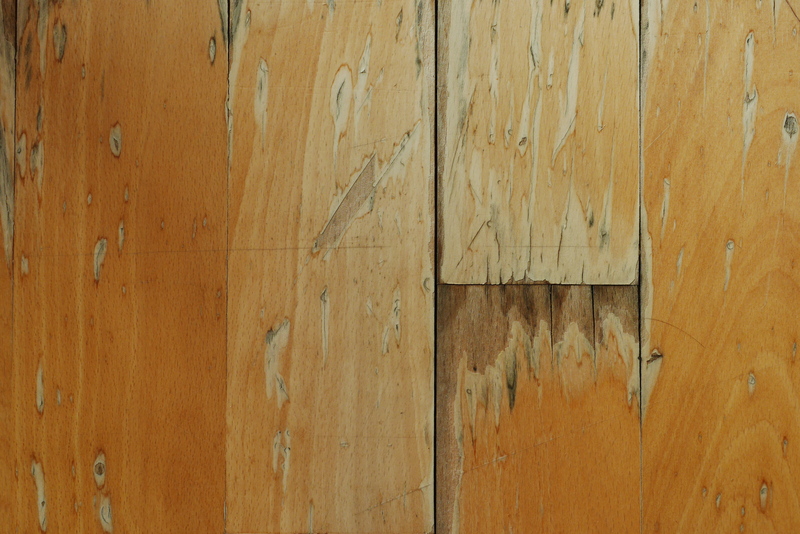Comprehensive Guide to Window Sill Mould Cleaning
Posted on 30/06/2025
Comprehensive Guide to Window Sill Mould Cleaning
Mould on window sills is more than just an annoying eyesore--it can potentially impact your indoor air quality and trigger health issues for household members, especially those prone to allergies and respiratory conditions. If you've ever spotted that unsightly black or greenish fuzz creeping along your window frames or ledges, you're not alone. Window sill mould cleaning is a necessary maintenance task for homeowners and renters alike. In this detailed, SEO-optimized guide, you'll discover everything you need to keep your window sills free from mould and maintain a healthy, welcoming home environment.
Understanding Mould Formation on Window Sills
Before delving into the methods for effective window sill mould removal, it's important to understand why mould develops in these spots. Mould is a type of fungus that thrives in areas with excessive moisture and a lack of proper ventilation. Given the variable climate, condensation forming on colder surfaces--especially near windows--provides an inviting environment for mould spores to settle and multiply. Window sills, being horizontal surfaces often exposed to condensation and humidity, are particularly vulnerable.
What Causes Mould on Window Sills?
- Condensation: Windows, especially those with poor insulation, tend to attract condensation--ideal for mould growth.
- Leaky windows: Water seeps inside due to damaged seals, cracks, or improper installation.
- Poor ventilation: Lack of airflow escalates humidity levels indoors, particularly in bathrooms and kitchens.
- Inadequate cleaning: Dirt, dust, and organic debris are food for mould spores.
- Climate: Humid or rainy environments promote spore growth on unprotected surfaces.
If left untreated, window mould isn't just unsightly--it can deteriorate window frames (especially wooden sills), compromise indoor air, and create unhealthy living conditions.

Potential Health Risks Associated with Mouldy Window Sills
Exposure to mould, especially over prolonged periods, can lead to adverse health effects. Some of the most common symptoms include:
- Itchy eyes, nose, or throat
- Persistent coughing or sneezing
- Skin irritation
- Worsening asthma or allergy symptoms
- Respiratory issues
Individuals with weakened immune systems, children, and elderly people are especially susceptible to these health risks. Proactive window sill mould cleaning is critical not only for cosmetic reasons but also for your overall well-being.
Identifying Different Types of Mould on Window Sills
Not all mould growth is the same. On window sills, common types include:
- Cladosporium: Usually appears black or green, and typically forms on wood or painted surfaces.
- Aspergillus: Sometimes yellowish, gray, or brown in color; can be a serious health hazard if allowed to grow unchecked.
- Stachybotrys (Black mould): Known for its dark black appearance; requires significant moisture.
While visual identification gives clues, mould type is less important than removing all signs of window frame mould promptly and thoroughly.
Supplies Needed for Window Sill Mould Cleaning
Gathering the right cleaning materials will make the job easier and safer. You may already have most of these items at home:
- Protective gloves and, if possible, a face mask
- Safety goggles (if dealing with a large patch, or mould allergies present)
- Plastic sheet or old towels to catch drips
- Spray bottle (for application of cleaning solution)
- Soft-bristled brush or sponge
- Toothbrush (for hard-to-reach corners)
- Microfiber or disposable cleaning cloths
- Vacuum cleaner with HEPA filter (optional, for cleaning debris)
- Mild detergent, white vinegar, baking soda, hydrogen peroxide, or a commercial mould remover
- Bucket of clean water (for rinsing)
Pro tip: Always wear gloves and ventilation gear when using commercial chemicals or dealing with extensive mould infestations.
Step-by-Step Guide to Cleaning Mould from Window Sills
1. Prepare the Area
- Open windows for ventilation.
- Lay down towels or plastic sheets to protect the surrounding area from drips or mould spores.
- Remove objects, blinds, or curtains from the window to avoid contamination.
2. Initial Wipe-Down
- Use a dry microfiber cloth to gently wipe away loose dirt, dust, or any dry patches of mould. Dispose of the cloth immediately if heavily soiled.
3. Apply Cleaning Solution
For routine window sill mould removal, you have multiple solution options:
- White vinegar: Fill a spray bottle with undiluted white vinegar (do not dilute with water, as concentration is key). Spray liberally on the affected areas.
- Hydrogen peroxide: Use a 3% solution. Spray directly onto the mould and let it sit for 10-15 minutes.
- Baking soda: Mix with a small amount of water to create a paste. Apply to the sill, scrub gently.
- Commercial mould cleaner: Follow the manufacturer's instructions carefully.
Tip: Never mix cleaning solutions, especially vinegar with hydrogen peroxide or bleach, as this can form harmful gases.
4. Scrub the Surface
- Using a non-abrasive brush or sponge, scrub in small circles.
- Pay attention to window corners, where mould clusters often lurk.
- Use a toothbrush for stubborn spots and crevices.
5. Rinse Thoroughly
- Wipe down the cleaned sill with a fresh, damp cloth to remove residual cleaning solution and loosened mould particles.
- For wooden sills, minimize water use and dry the area quickly to prevent further damage.
6. Dry the Area Completely
- Use a clean, dry microfiber cloth to soak up any remaining moisture.
- Leave the window slightly open or use a fan to ensure thorough drying.
A completely dry sill is one of the best preventatives against future mould growth.
Natural vs. Chemical Mould Cleaners for Window Sills
Should you use natural cleaning solutions or commercial mould removers? Here's what you need to know:
Advantages of Natural Cleaners
- No harsh fumes or chemical residues
- Safer for children and pets
- Cost-effective and readily available (vinegar, hydrogen peroxide, baking soda)
- Less risk of damaging paint or wood finishes
Potential Benefits of Commercial Mould Removers
- Specifically formulated to destroy spores quickly
- Effective against tough or recurring mould problems
- May offer long-lasting mould resistance
Note: For black mould or extensive infestations, professional-grade products--or calling a mould remediation specialist--may be the safest route.
Preventing Future Mould Growth on Window Sills
The key to lasting window sill mould remediation is to limit moisture and improve conditions for your windows. Here's how:
- Improve Ventilation: Keep windows open whenever possible, especially after showers or cooking, to allow for air exchange.
- Control Humidity: Use dehumidifiers in damp rooms and keep indoor humidity below 60%.
- Wipe Condensation: Make it a habit to wipe window condensation daily, particularly in colder months.
- Check Window Seals: Seal gaps, repair leaks, or re-caulk windows as needed to prevent water infiltration.
- Upgrade Windows: Consider installing double-glazed or well-insulated windows to reduce temperature swings and condensation.
- Regular Cleaning: Dust and clean window sills and frames weekly to discourage spore buildup.
*Prevention is always easier and more cost-effective than repeated treatments!*
When to Call a Professional Mould Removal Service
Mould on window sills can almost always be handled with DIY methods if spotted early. However, you should seek professional mould remediation if:
- The mould covers an area larger than 1 square meter (about 10 square feet)
- You notice persistent, recurring mould despite cleaning and preventive efforts
- Mould has penetrated porous materials (e.g., deep into the wood or wall below the sill)
- There's a strong, musty odor that cleaning doesn't remove
- Household members experience severe health symptoms possibly related to mould
A professional will identify the underlying cause, safely remove hazardous growth, and recommend repairs or upgrades to eliminate the problem for good.
Tips for Cleaning Mould from Different Window Sill Materials
Wooden Window Sills
- Avoid soaking wood; too much moisture can warp or rot the sill.
- After cleaning, allow the sill to dry thoroughly--use an absorbent cloth and consider a gentle hair dryer.
- If mould has deeply penetrated the wood, sanding and resealing may be necessary after cleaning.
Painted or PVC Window Sills
- These surfaces are usually nonporous, making cleaning easier.
- Still, avoid abrasive scrubbing to prevent scratches to the finish.
- Dry completely and check frequently for condensation or leaks.
How to Remove Mould on Window Sill Caulk and Seals
Often, mould will appear not just on the sill surface but embedded in the caulking or around the frame. To clean caulk:
- Spray with white vinegar or a commercial cleaner and let sit for 15-20 minutes.
- Scrub with an old toothbrush, paying attention to crevices.
- If the caulk remains stained or crumbles away, remove the old caulking and replace it with mould-resistant silicone.

Frequently Asked Questions about Window Sill Mould Cleaning
Can I use bleach to clean black mould on window sills?
While bleach is effective at killing mould on nonporous surfaces, it's not recommended for porous materials like wood, as it can't reach deep-rooted spores. For wood, use vinegar or hydrogen peroxide instead.
How often should I clean my window sills to prevent mould?
Weekly dusting and monthly deep cleaning is a good rule of thumb--more often in high-humidity rooms like bathrooms and kitchens.
Is mould on window sills dangerous?
*Small spots are not usually hazardous,* but ongoing exposure or larger growths can cause health issues for sensitive individuals and should be addressed quickly.
Conclusion: Keep Your Home Safe and Healthy with Proper Window Sill Mould Cleaning
Mould on window sills might seem minor, but it can quickly turn into a bigger issue if ignored. With regular cleaning, vigilance against moisture, and the simple steps outlined in this comprehensive window sill mould cleaning guide, you can protect your living space, ensure good indoor air quality, and preserve the beauty (and structure) of your windows. Whether you're tackling a few unsightly spots or planning a proactive routine, a little effort goes a long way in keeping your sills sparkling clean and mould-free.
Stay proactive, stay safe, and enjoy brighter, cleaner views from every window in your home!



